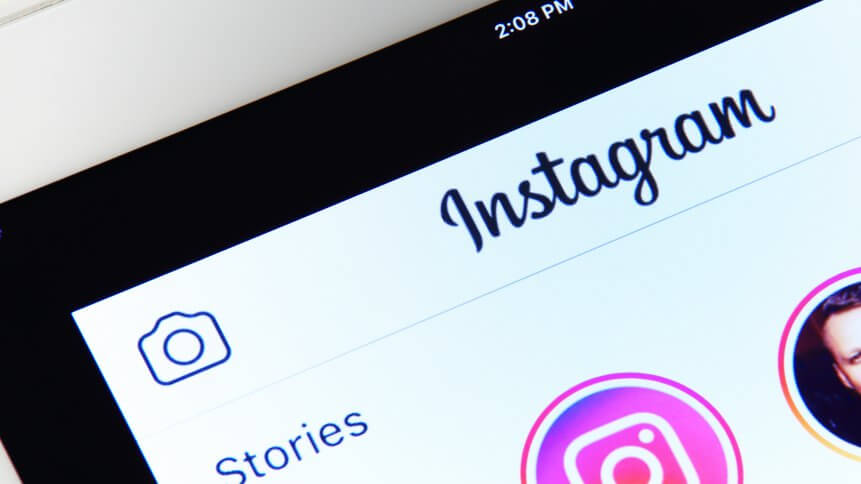Visual search is here, now’s the time to act

The opportunities around voice search have secured the imagination of the tech journalists and futurists. The problem is that only two percent of users that have asked Amazon’s Alexa a question went on to make a purchase. Figures like this will make it hard for many business leaders to find the ROI in voice search until user habits significantly change. But what about the rise of visual search?
READ NEXT

Have we crossed the AI chasm yet?
In a world obsessed with technology, we often underestimate our human capabilities. For example, we can identify images within only 13 milliseconds. The human brain typically processes images 60,000 times faster than text. But that’s not all, an incredible 90 percent of information received by the brain is visual.
Traditionally, technology has struggled to deliver similar results and compete with the far superior human brain. However, the arrival of machine learning and artificial intelligence is beginning to change all that. In our ongoing quest for simplicity, younger audiences are performing searches by taking a photo and uploading it to a search engine or app to find where they can buy items, rather than typing in keywords.
Consumers can now take a photo of nearly any decor or item of clothing they see someone wearing, and instantly find out where they can buy it, or at least something similar. Fashion retailer ASOS’ visual search tool is just one example (see below).

The ASOS visual search tool. Source: ASOS
Businesses will need to optimize their images to ensure that more people find their products as images begin to play a crucial role in increasing conversions. Digital natives face a constant bombardment of images on their social timelines throughout the day. This has a heavily influence on their purchase decisions and can determine whether a lead converts into a sale.
Is this the end of the road for keywords?
For years, many businesses have resorted to the dark art of keyword stuffing on its web pages in a desperate attempt to manipulate a site’s ranking. But current trends suggest that keywords could finally lose their power in areas such as fashion and home improvements that will become dominated by visual search.
Two years have already passed since Pinterest’s CEO, Ben Silbermann advised, “The future of search is going to be about pictures instead of keywords”, but we are already seeing the usual suspects in tech working towards a much more visual way of searching and businesses will have to evolve with yet another dramatic rise in expectations from their customers.
The evolving visual search landscape
The digitization of window-shopping experience is unsurprisingly much more about what you see than what you say. Pinterest has 250 million active monthly users performing more than 2 billion monthly searches. The release of its ‘Complete the Look’ tool provides users with a visual search feature that recommends products based on the context of images.
The technology enables the platform to provide users with fashion and home decor items based on the attributes of all the objects within an image that users are searching for and saving. Predictably, and evidence enough that visual search should be taken seriously, Amazon also allows users to look for an outfit based on an image with StyleSnap, the latest addition to the online retailer’s app.
Google also has its sights set on simplifying visual search too. In 2017, the camera discovery tool Google Lens was announced. Here in 2019, Google Lens invites users to search what you see and explore what’s around you in an entirely new way from your smartphone. Tech companies are making it easier for consumers to find what they are looking for, but what does this mean for businesses?
YOU MIGHT LIKE

What to do if your Instagram engagement drops
What is the ROI of visual search?
Reports suggest that 62 Percent of Gen Z and Millennial shoppers want visual search capabilities, more than any other new technology. Research firm Gartner also predicts that by 2021, early adopting brands that redesign their websites to support visual and voice search will increase digital commerce revenue by 30 percent.
There are many examples of early adopters that have experienced success by experimenting with this technology. Hilfiger’s visual search helped Tommy Hilfiger nearly double the average time spent on its site. Forever 21 also increased AOV (average order value) by 20 percent with AI-powered visual search and navigation.
Every week over 100,000 unboxing and store haul videos are released on YouTube reaching billions of users. Watching someone returning from a shopping trip and sharing their insights on every item they have purchased is also changing how we locate, evaluate, and share products. The smartphone in our pockets is blending physical and digital environments as the lines between online and offline disappear.
Although visual technology is still in its infancy, as customers increasingly use visual search, the physical typing of a keyword search and Googling something will quickly begin to feel cumbersome and old fashioned. That is the game-changing moment that should encourage leaders to revisit their SEO strategies and ensure they can meaningfully engage with audiences at every stage of their purchase journey.
Visual search and context-aware search tools seem like the obvious next step for retailers as we enter a new frontier of visual commerce. But as consumers turn to search engines through text, voice, and images, it should act as a wakeup call for businesses from all industries that how we search for information is changing.







